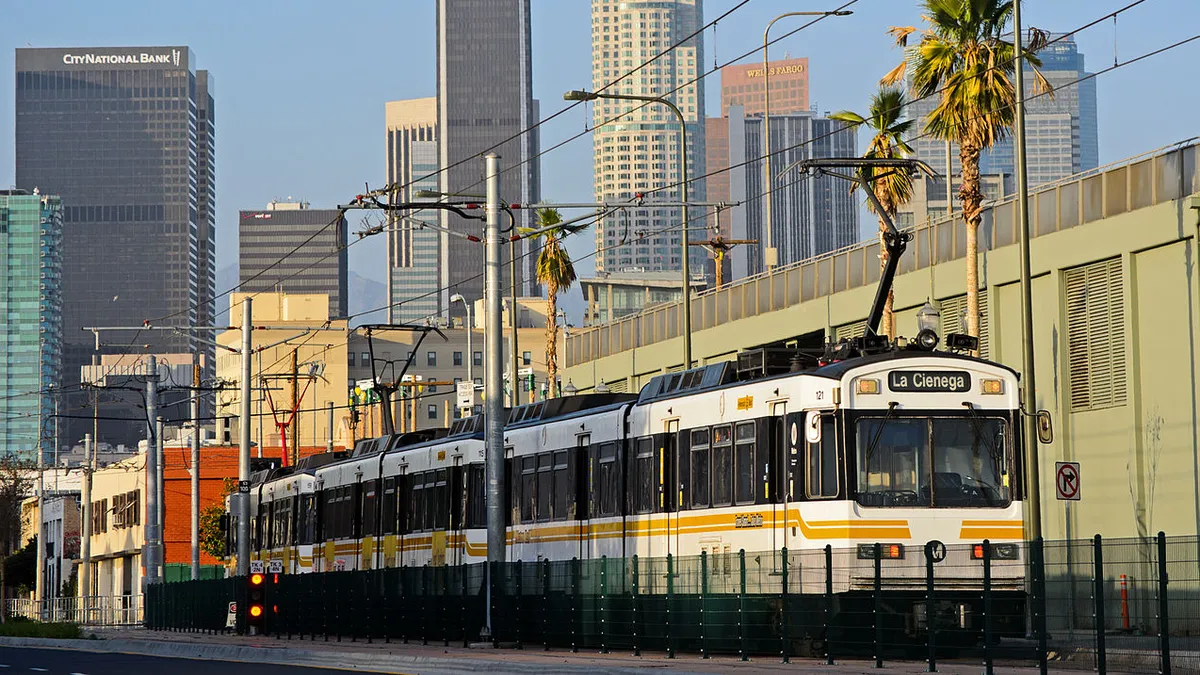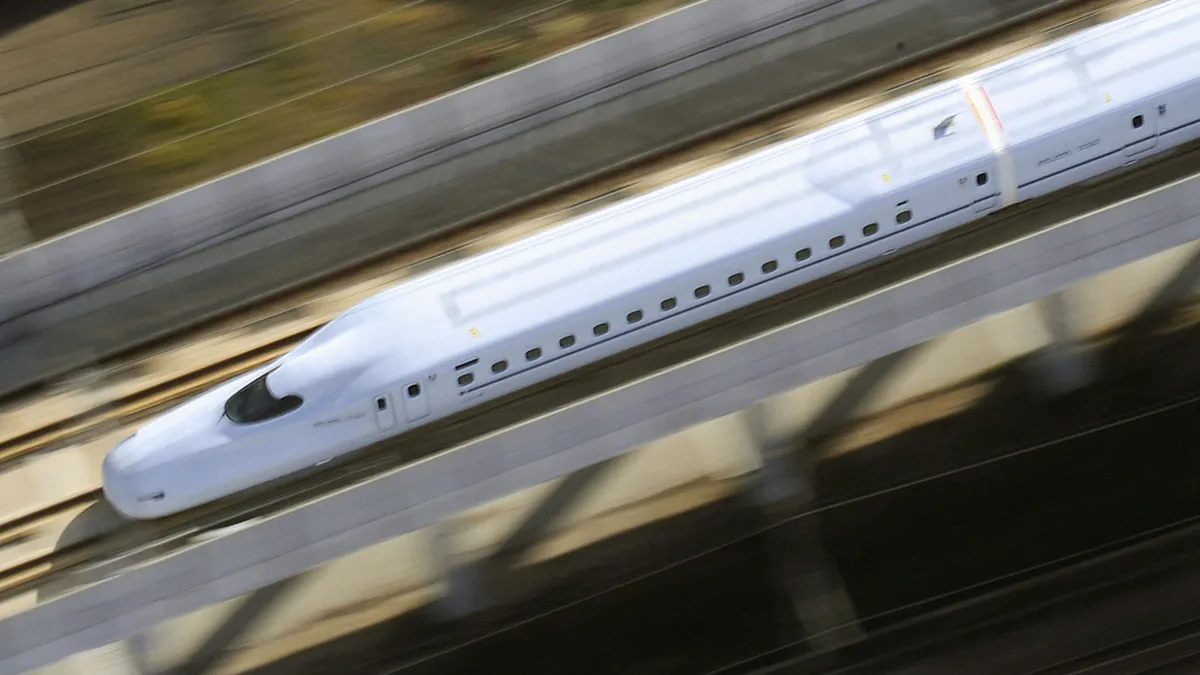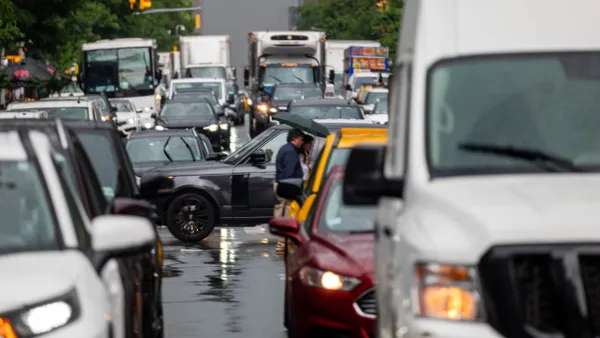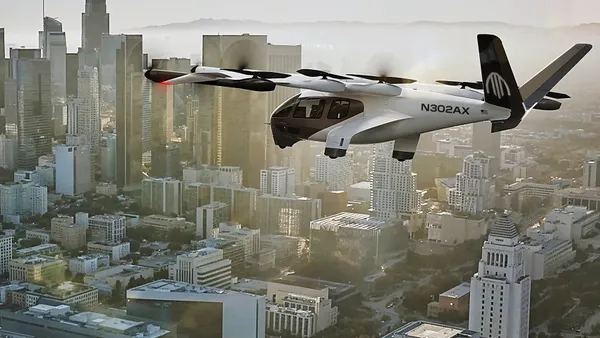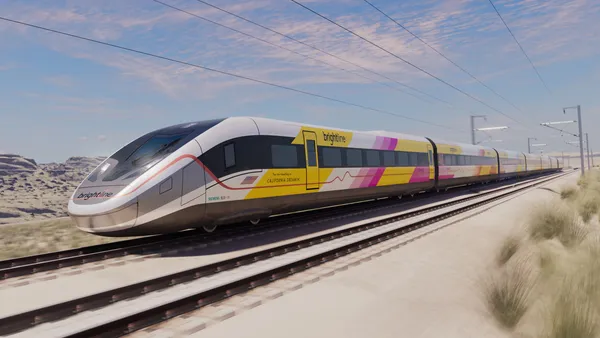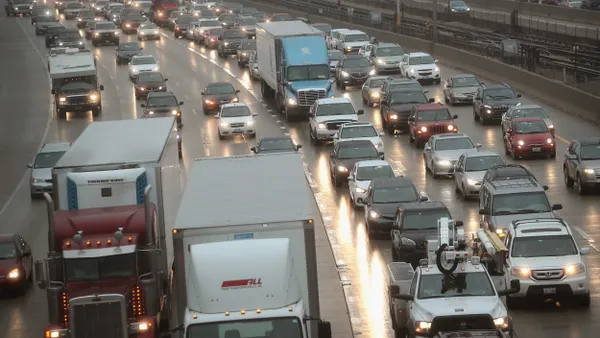Dive Brief:
- Government and private partners in Los Angeles have released a plan to reduce air pollution and greenhouse gas emissions (GHG) 25% above existing commitments by 2028 through electrification of the transportation sector. The Zero Emissions 2028 Roadmap 2.0 from the Transportation Electrification Partnership (TEP) sets a goal to have 30% of cars on the road be electric vehicles (EVs) by 2028, when Los Angeles will host the Olympics.
- Beyond electrification, the roadmap says consumers should have more shared mobility options, especially in low-income and disadvantaged neighborhoods. The partners set a goal to convert 20% of all trips in single-occupancy vehicles to bikes, active transportation or zero-emission public transit.
- The roadmap also identifies freight and goods movement as a major target, with plans to electrify heavy- and medium-duty trucks, and convert the 710 Freeway into a "zero emissions goods movement corridor."
Dive Insight:
California is already a national leader in reducing vehicle emissions, with a plan that would put 5 million zero-emission vehicles (ZEVs) on the roads by 2030. The state has also sued the Trump administration over its plan to roll back federal fuel economy standards; has announced plans to keep its own standards at higher levels; and has struck a deal with four automakers to voluntarily improve fleet efficiency.
The roadmap from TEP — which includes the City and County of Los Angeles, the California Air Resources Board, the Los Angeles Department of Water & Power and the nonprofit Los Angeles Cleantech Incubator (LACI) — would take the County of Los Angeles beyond what the state has laid out in a concerted effort to slash the region's notorious traffic pollution. The plan has a goal for at least 80% of vehicles sold by 2028 to be EVs, and seeks to convert taxi, ride-hailing and public transit vehicles away from fossil fuels.
Matt Petersen, LACI president and CEO, said the "ambitious" roadmap, which follows a broader one published last year, is an opportunity to "study policies and incentives to accelerate progress." The ideas must still be adopted by the county or city government or private partners.
A key challenge for meeting the goals of the roadmap is reaching low-income communities, where the high up-front cost has limited access to EVs. The plan offers a proposal for an income-based "fee-bate" program that would charge high-income drivers for continuing to use gas-powered cars. Additionally, TEP and LACI have been awarded funding for mobility pilot projects in four disadvantaged communities, including deployment of EV car-sharing and dedicated micromobility services.
The plan also targets goods movement, which has been a difficult sector to electrify because of the lack of fully electric heavy duty trucks. That involves not just "reducing emissions, but also reducing the number of trucks that have to be on the road," Petersen said. To reach that goal, the roadmap explores options for last-mile delivery that do not involve trucks, like using e-bikes or drones. LACI is involved in a feasibility study for a plan that would use facilities at the LA Convention Center as a distribution center for the city center, limiting the number of delivery vehicles on urban streets.


